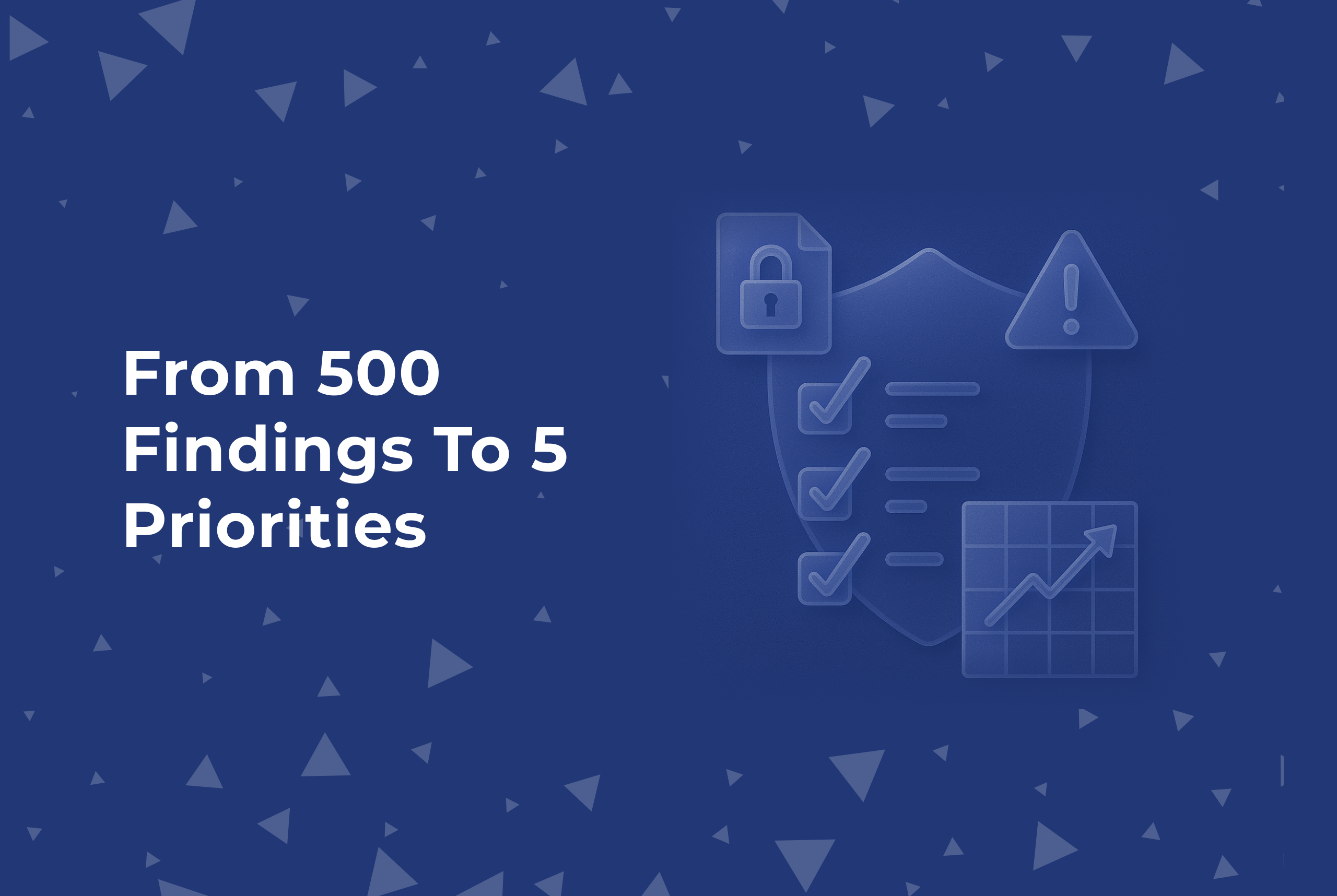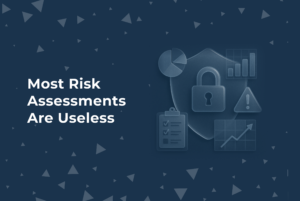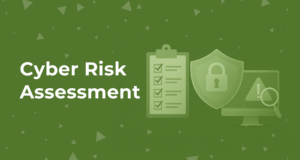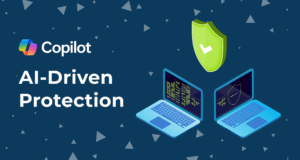Every security team eventually hits this wall: you run a scan, or you get an assessment back, and now you’ve got hundreds—sometimes thousands—of findings. Most of them labeled “medium severity.” None of them clearly wrong. But also? None of them all that useful.
You’re not getting insight. You’re getting entropy.
And the real question is: how do you get from all this noise to something that actually helps you decide what to fix first?
The Problem Isn’t Detection. It’s Prioritization.
In most systems, you can detect more than you can act on. That’s true in search, in infrastructure, and definitely in security.
So the job of a good risk model isn’t just to tell you what’s wrong—it’s to help you reason about what matters.
You want to know:
- What’s the actual impact if this issue is exploited?
- How likely is that to happen?
- Would we even notice? How long would it take us to respond?
These are the questions that shift you from detection to decision-making.
You Don’t Need a List. You Need a Heatmap.
We’ve seen this over and over—teams get buried in vulnerability reports and patch backlogs because they don’t have a simple way to organize by risk.
A lightweight risk matrix solves that. Something like this:
| Low Likelihood | Medium Likelihood | High Likelihood | |
| High Impact | Medium Priority | High Priority | Immediate Action |
| Medium Impact | Low Priority | Medium Priority | High Priority |
| Low Impact | Ignore it | Low Priority | Maybe Later |
You can adapt this to your environment. The idea isn’t to create the perfect scoring system—it’s to make prioritization obvious.
Because once your engineers and infra teams see what matters, they can move faster. No one wants to fix random bugs forever. They want clarity. They want to help.
Frameworks Help—But Only If They Fit How You Work
A lot of teams reach for something like NIST or ISO 27001. And that’s fine. But the value isn’t in the acronym—it’s in whether the framework helps you think clearly.
If your company is deploying product 20+ times a week across multiple clouds and ephemeral workloads, a legacy checklist probably won’t capture what you’re really exposed to.
The framework should reflect your architecture, your delivery velocity, and your actual threat model. If it doesn’t, you’re optimizing for the wrong thing.
A Risk Model Should Be a Thinking Tool
This part matters.
You’re not building a dashboard. You’re building a model that helps your team—security, engineering, leadership—reason about risk in a consistent way.
That model should:
- Adapt as your system evolves
- Survive even if team members move on
- Scale with how fast you build and ship
And if it’s really working, it won’t just be a tool for security. It’ll be part of how your organization makes decisions.
A Few Questions to Ask Yourself
- Are we prioritizing based on real business impact—or just reacting to scanner output?
- Do our engineers understand why something is high priority?
- Can we explain our decisions during an incident or an audit—and would we still agree with them a month later?
If you’re not confident in those answers, the fix isn’t more tooling. It’s a better model.
That’s what we help teams build at RemoteMore. But even if you’re doing this in-house, the takeaway is the same:
Don’t just catalog vulnerabilities.
Build a system for focusing on what breaks your business.
That’s how you go from 500 findings… to the five that actually matter.






